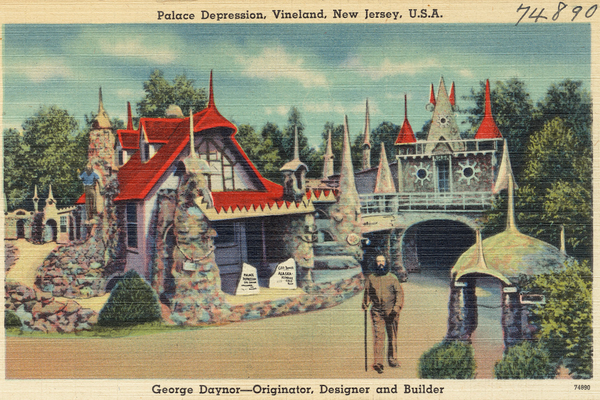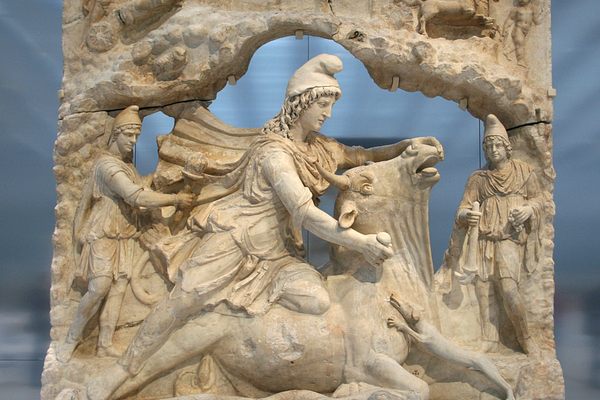The Architect Who Married Modernism and Ancient Khmer Style
Until his recent death, Vann Molyvann struggled to bring Cambodia’s past and present together.

For many people, the idea of Cambodian architecture begins and ends with the lotus-inspired sandstone towers of Angkor Wat—the medieval temple complex that is considered the largest religious monument in the world. Mid-century modernism, on the other hand? Perhaps not so much.
However, in the 15 years that followed Cambodia’s independence from France in 1953, the capital of Phnom Penh transformed into one of the foremost outposts of modernism—largely thanks to the vision of a single man, architect Vann Molyvann. On September 28, 2017, Molyvann passed away from natural causes in Siem Reap, the gateway to the ruins of Angkor Wat, which had inspired much of his work. But rapid construction and changes in the capital city now mean that Molyvann’s legacy—which already survived coups, purges, and wars, barely—is under threat.

“Before the term ‘green architecture’ was thought in anyone’s mind, he was already designing buildings really creatively to integrate natural light and airflow,” Canadian filmmaker Christopher Rompre, who directed The Man Who Built Cambodia, a 2014 documentary on Molyvann’s life, said in a recent interview with Cambodian magazine Voa Cambodia.
Rompre, who has been based in the Southeast Asian nation for several years, turned his attention to the architect’s work after spotting some “really interesting, unique buildings” that were slowly being enveloped by Phnom Penh’s construction boom. These encounters sparked his curiosity into the work of a lesser-known giant of modernism, a man whose career and vision were deeply entwined with the turbulent history of his country.

“I was trying to understand the origins of the Cambodian people,” Molyvann, then 87, said in the film. “Cambodians have a very spiritual understanding of the world.” After earning his degree from Paris’s École nationale supérieure des Beaux-Arts, where he studied with famed French-Swiss architect Le Corbusier, he returned to his newly independent country during a cultural renaissance that is considered by many to be modern Cambodia’s “Golden Age.” Then-ruler Prince Norodom was eager to let go of the country’s colonial identity and project a modern face to the world. His plans included remaking the appearance of what had been a sleepy provincial capital. He picked 30-year-old Molyvann to do it.
Molyvann served for 13 years as State Architect—1957 to 1970—during which time he worked on nearly 100 projects, including signature creations such as the National Olympic Stadium, the National Theatre, Chaktomuk Conference Hall‚ and the Institute for Foreign Languages. His works represent a unique combination of modernism and elements of the architecture typical of the Khmer Empire, which ruled the country from the eighth to 15th centuries. The style has became known as “New Khmer.”

“This was not inspired by Frank Lloyd Wright, not a European clone, but an authentic style that arose independently in Cambodia,” wrote urban planner Helen Grant Ross, coauthor with Darryl Leon Collins of Building Cambodia: “New Khmer Architecture” 1953–1970, in a recent interview with reporter Ron Gluckman.
As Molyvann himself explains in the film, he wanted to draw from the past to create something entirely new: “Why did I study Le Corbusier? Because he used to built his ‘unites des habitation’ on stilts. Houses on stilts had been existing since prehistoric times in Cambodia. So I only adapted his vocabulary to Khmer architecture.”
Much like Frank Lloyd Wright or Le Corbursier himself, Molyvann’s design process started with an attentive analysis of setting: cardinal position, prevailing winds, and the local rocks, earth, mud, and grass. “The most important is to find what the site suggests,” he says in the film, “what it provokes in the imagination.”

Phnom Penh’s National Olympic Stadium—an ellipitcal, 70,000-seat arena and associated sports complex designed in the early 1960s—is widely considered his signature creation. Moly, as his friends called him, was inspired by the way in which Khmer architects combined earth and water at Angkor Wat. Some 17 million cubic feet of earth were dug out from the site to shape the stadium’s grounds, while an elaborate system of inner canals allowed water to flow from its roof to pools, or barays, at the base—recalling the ancient temples, preventing floods, and keeping crowds cool at the same time. He intended the stadium to be an example of sustainable and accessible architecture that welcomes all for exercise, socializing, or relaxing in the cooled breezes.

The structure was supposed to host the 1963 Southeast Asian Peninsular Games but the competition was never held because of growing political turmoil. In the late 1960s, the kingdom of then-ruler Prince Sihanouk was challenged both by the Communist Party of Kampuchea (CPK), informally known as “Khmer Rouge,” and by his own generals. In 1970, while he was on a state visit to Moscow, the prince was overthrown in a coup led by General Lon Noland. Molyvann, a long-time collaborator and friend of Sihanouk, fled with his wife and kids to Switzerland in the hopes that he could soon return.
But the situation worsened. Civil war broke out between United States–backed Noland and the Viet Cong–supported Khmer Rouge, which eventually seized power in 1975. The new state’s calendar was set to “year zero,” with authoritarian rule and mass executions to follow. For 15 years, Khmer Rouge leader Pol Pot set in motion his plan to “cleanse society from modern elements,” which included the forced displacement of people from cities to the country and the systematic killings of artists and intellectuals. An estimated 1.5 million lost their lives at the hands of his regime.
Pol Pot’s dedication to wiping out modernity and urbanism also took aim at Molyvann’s efforts. All of the materials documenting his works were destroyed, and his buildings were abandoned or converted to military use. The stadium he had so carefully designed as a public resource was used as a site for mass executions.
Molyvann only returned home after the Paris Peace Accords of 1991 ended the Cambodian-Vietnamese War. He found many of his buildings transfigured or deeply neglected. In 1994, during reconstruction efforts, a fire burned down his Preah Suramarit National Theatre, which had just been reestablished as a home for the artists who survived the Khmer Rouge years. It’s charred remains were demolished in 2008.
His creations that weathered those years are now facing an entirely new challenge—Cambodia’s turn back toward urbanism, and the construction craze it has created. Over the past 10 years, the nation’s GDP has doubled, and Phnom Pehn’s population grown nearly four percent a year. New residential blocks are sprouting like mushrooms. The White Building—a residential estate that Molyvann designed with Khmer architectural principles, such as exterior air vents and a partially raised floor to create a shaded social area in the basement—is now being replaced by a Japanese-designed, 21-story mixed-used building. The Council of Ministers building, with a pyramidal shape that recalls Angkor Wat, was replaced in 2008 by a Chinese-designed and -funded building that looks, well, like a contemporary Chinese government office.

The National Stadium remains intact as a place where locals can exercise, conduct business, and socialize day or night, but it had been sold to a Taiwanese developer. The Angkor-inspired drainage system was altered, so now the site frequently floods. This symbol of the New Khmer style also now sits among high-rises and construction cranes.
The problem of recognition and preservation of Molyvann’s creations centers around the fact that they are old enough to be in need of restoration—but not old enough to be considered cultural heritage in a country with such a recognized and significant ancient lineage. As Ross and Collins explain, even French colonial buildings get more international recognition as world heritage than the New Khmer places do. Further, the current government, which came to power in 1979 after defeating the Khmer Rouge, is keen to wipe out any legacy of pre-1979 history.
“The government doesn’t want to leave anything from before 1979, because it wasn’t their achievement. History is completely manipulated,” Molyvann said in a 2010 interview with the Los Angeles Times. Wiping out, by action or neglect, architecture to reshape the country’s identity is a recurrent historical theme—and one that’s not particular to Cambodia.

The father of New Khmer Architecture spent his final years trying to impart his vision to younger generations. “They [young people] should all get together and create New Khmer architecture,” he said with emotion, in one of the last scenes of the film. “No more Vann Molyvann, but a movement of the young.”
The Vann Molyvann Project, started in 2009 by Canadian architect Bill Greaves, is now working to prevent history from interfering with New Khmer architecture yet again. The project calls for Cambodian and international architects to catalog Molyvann’s legacy in paper and digital archives, and through physical models of his buildings. The team also organizes walking tours and records oral histories from people who still inhabit or use the structures.

“We took care of so many things at the Project” says Seng Chanraksmey, a recent architecture graduate from Phnom Penh’s Norton University, who took part in the Vann Molyvann Project in 2015. “I applied because I wanted to know more about his impressive design concept. We were surveying Molyvann’s buildings, making models, interviewing local people for our oral history records.”
Seng is just making her first steps as a professional architect in the booming—and mostly foreign-funded—Phnom Penh construction sector. When asked what is it about New Khmer that inspires her, she goes back to the wellspring of the style. “There are too many things that inspire me about it, but it is especially the will to combine Khmer and Western style to keep the Cambodian identity alive,” she says. “And the massage Vann Molyvann left to younger generations: Learn from the past, but do not copy.”


























Follow us on Twitter to get the latest on the world's hidden wonders.
Like us on Facebook to get the latest on the world's hidden wonders.
Follow us on Twitter Like us on Facebook